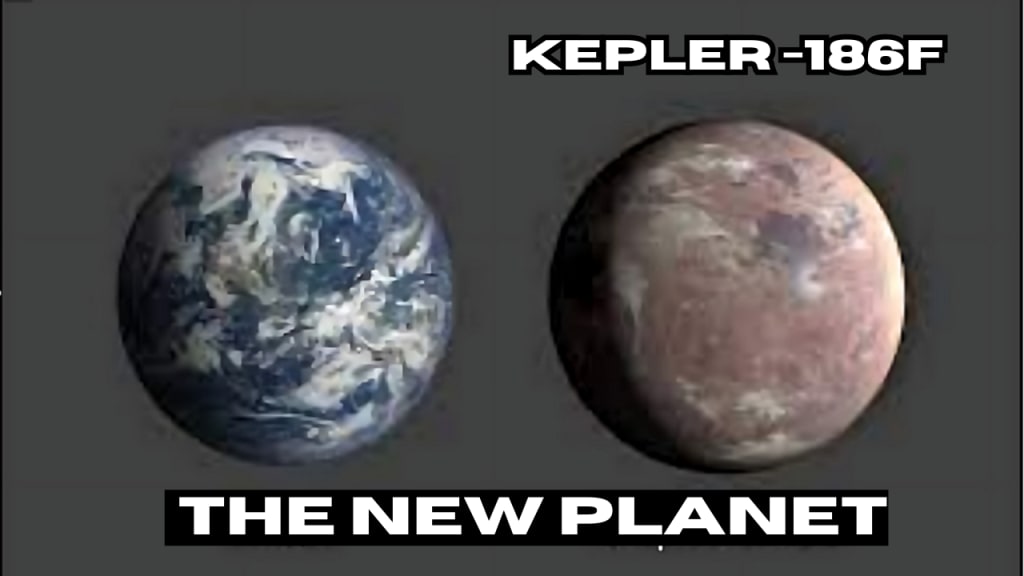DISCOVERY OF NEW "PLANET"
KEPLER - 186F

This article is about the discovery of new planet :
The discovery of a new planet that could potentially support human life. Scientists at NASA announced that they had found a planet orbiting a star in a neighboring galaxy that had similar characteristics to Earth, including a breathable atmosphere, liquid water, and a temperate climate.
The news sent shockwaves through the scientific community and sparked a renewed interest in space exploration and the possibility of finding extraterrestrial life. NASA officials held a press conference to discuss the discovery and answer questions from reporters.
"This is a groundbreaking discovery that could change our understanding of the universe and our place in it," said Dr. Jane Thompson, a NASA scientist who was part of the team that made the discovery. "The planet has many of the same features that make Earth so hospitable to life, and we believe there could be many more like it out there."
The planet, named Kepler-186f, is located approximately 500 light-years from Earth and is roughly the same size and composition as our planet. Scientists believe that the planet's proximity to its star could make it a prime candidate for supporting plant and animal life.
The news of the discovery quickly spread across social media, with many people expressing excitement and wonder at the possibility of finding other habitable planets. Some even joked about the prospect of starting a new civilization on Kepler-186f.
However, others were more cautious, pointing out that the planet's distance and the technology needed to reach it made it unlikely that humans would be able to colonize it anytime soon.
"Let's not get ahead of ourselves," said Dr. John Smith, a physicist at MIT. "While this discovery is certainly exciting, it's important to remember that we are still a long way from being able to explore and inhabit other planets. We need to continue investing in research and technology if we want to make that a reality."
Despite the uncertainty and challenges ahead, the discovery of Kepler-186f has reignited the public's fascination with space exploration and the search for life beyond our planet. For many, it is a reminder of the boundless possibilities of the universe and the enduring human spirit of exploration and discovery.
ABOUT KEPLER - 186F :
Kepler-186f is an exoplanet discovered by NASA's Kepler spacecraft on April 17, 2014. It is located in the habitable zone of the star Kepler-186, which is approximately 500 light-years away from Earth in the constellation Cygnus. The planet is about 1.1 times the size of Earth and orbits its star once every 130 days.
Kepler-186f is the first Earth-sized exoplanet discovered in the habitable zone of its star. The habitable zone is the region around a star where conditions are just right for liquid water to exist on the surface of a planet. Liquid water is considered a key ingredient for life as we know it.
The planet's discovery was made using the transit method, which involves observing a star for changes in brightness as a planet passes in front of it. By measuring these changes, scientists can determine the size and orbital period of the planet.
Despite its similarities to Earth, Kepler-186f is not an exact twin. Its star is a red dwarf, which is smaller and cooler than the Sun, and emits different wavelengths of light. This could have implications for the planet's atmosphere and potential for supporting life.
Scientists are currently studying Kepler-186f to learn more about its composition and characteristics. This includes analyzing its atmosphere for signs of water vapor, oxygen, and other gases that could be indicators of life.
While Kepler-186f is the closest Earth-sized exoplanet discovered in the habitable zone, there are many other potentially habitable exoplanets that have been identified in recent years. The discovery of these planets has renewed interest in the search for life beyond our solar system and has inspired new missions and technologies aimed at studying these distant worlds.
Overall, the discovery of Kepler-186f represents a significant milestone in the search for habitable exoplanets and has opened up new possibilities for the study of astrobiology and the search for extraterrestrial life
About the Creator
Noman Afzal Samad
I'm just try new ways to earn money online
anyone help me? huh






Comments
There are no comments for this story
Be the first to respond and start the conversation.